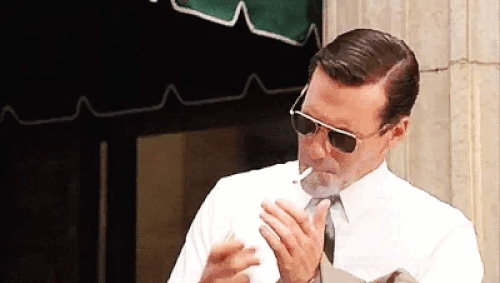Tense Magic
/Tense Magic is the opposite of Carefree Magic.
The performer exudes an internal tension. Or he grips his props in an unusual or tense manner. Or he speaks in a tense fashion. Or the vibe in the room is tense.
This is so common that I would call it the standard for traditional magic. Almost always, there is something that comes off as awkward or tense. If not multiple things.
One of the principles of the Carefree Magic philosophy is to perform tricks that allow you to engage with people and objects around you in a normal, human way. It’s shocking to me how little magicians seem to care about this. It often seems like the only question magicians ask themselves is, “Is this theoretically impossible?” If the answer is “yes,” they’re okay with whatever other limitations the trick has.
“Is it impossible for a peanut to appear under a bottle cap? Yes! Okay, then let’s do the trick.”
But the bottle cap doesn’t look normal.
But the peanut can’t be examined.
But you have to stiffly hold the cap at one unnatural angle the whole time.
But there’s no point to a peanut appearing under a bottle cap.
“So what? It’s IMPOSSIBLE for a peanut to appear under a bottle cap!”
Here’s the problem… Tension cancels out impossibility.
If everything you do isn’t normal or justified/contextualized in some manner, then they will dismiss what they saw as much as their mind will allow them to.
Some people will pick up on that tension and dismiss everything they saw as “just a trick.”
The good news is, this tension is SYNONYMOUS with “magic tricks” in the mind of most people.
They expect you to use some fakey looking prop, or handle objects in a strange way, or stop them from looking where they want to look, or speak in a scripted or awkward manner. That’s what they expect from a magic trick.
So when you relax back into the corner of the couch and talk casually about something, you can discuss the most unbelievable subjects and show them the most impossible things, without it feeling like “just a trick” because you lack that tension. Their mind knows, “Surely, this is just a trick.” But it feels like something else.
Years ago, I defined the magical feeling as the gap that exists when you know something isn’t real, but it feels as if it is. Carefree Magic is designed to work on the feeling of this being not a trick.
With Tense Magic, they know it’s a trick, and it feels like at trick because they sense the tension they associate with a trick.
I’ll leave you today with a great example of one of the aspects of Tense Magic: the awkward manner with which magicians handle the props they use.
@lilch0mp Bizarre elbow placement
♬ original sound - Lilchomp






